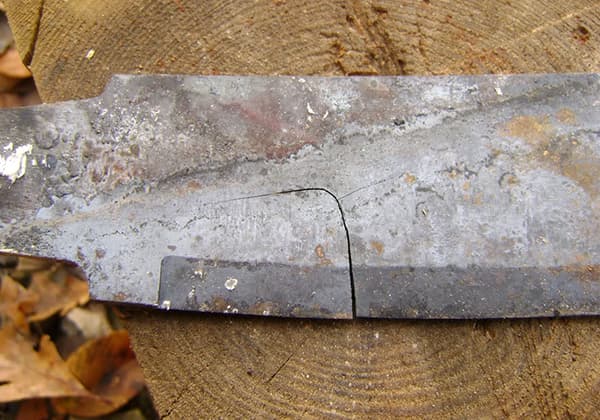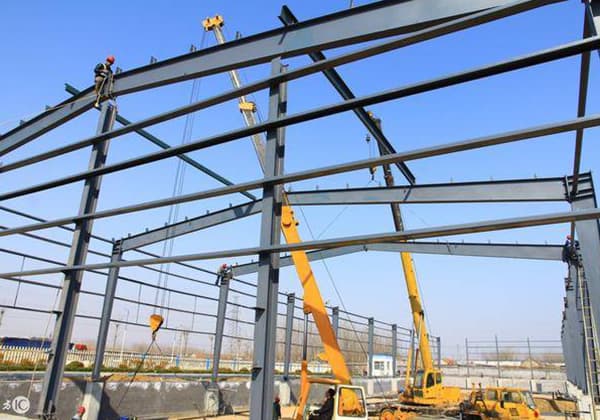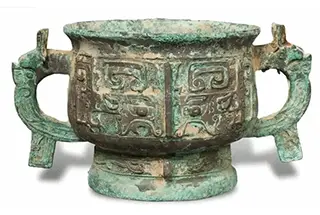Here is the question: does stainless steel spark when grinding?
Yes, stainless steel does spark when grinding. The sparks result from tiny metal fragments being heated to high temperatures by the friction of the grinding process, which causes them to glow and appear as sparks. These sparks can vary in color and intensity, depending on the type and composition of the stainless steel being ground.
1. Why do sparks appear in steel spark identification?
When steel is ground against a wheel with a certain pressure, it is reduced to fine grains by the abrasive action of the wheel. The particles become heated due to the mechanical grinding and are ejected by the centrifugal force of the rotating wheel.
As these heated particles come in contact with the air, they undergo oxidation, generating enough heat to bring the steel particles close to the melting point, and emitting light in the process. The trajectory of the bright spot follows a streamline.
During oxidation, an iron oxide film (2Fe + O2 = 2FeO) is first formed on the surface layer of the iron. Inside the grains, the steel contains carbon in the form of carbide, which decomposes at high temperatures, releasing carbon (such as Fe3C – Fe + C in the presence of carbon Fe3C). The released carbon then reacts with the iron oxide on the surface of the grain, forming gaseous carbon monoxide.
The carbon atoms reduce the surface iron oxide, enabling it to take oxygen from the air and be re-oxidized. This process also triggers a reaction with the carbon inside the particle, causing more carbon monoxide gas to accumulate within the grain.
When the internal gas pressure exceeds the surface tension of the outer layer of particles, an explosion occurs, which manifests as fireworks.
After one burst of particles, if there is remaining carbon that has not participated in the reaction inside the finer particles, the oxidation reaction can occur again, followed by a second, third, and even fourth burst, forming a dendritic pattern.
It is apparent that the explosion is caused by the combustion of carbon.
Therefore, the amount of explosion in carbon steel is directly proportional to the amount of carbon present in the steel. The higher the carbon content in carbon steel, the more frequent the explosions occur, and vice versa. As dendritic explosions occur, the split level and pollen increase with the increase of carbon content in the steel.
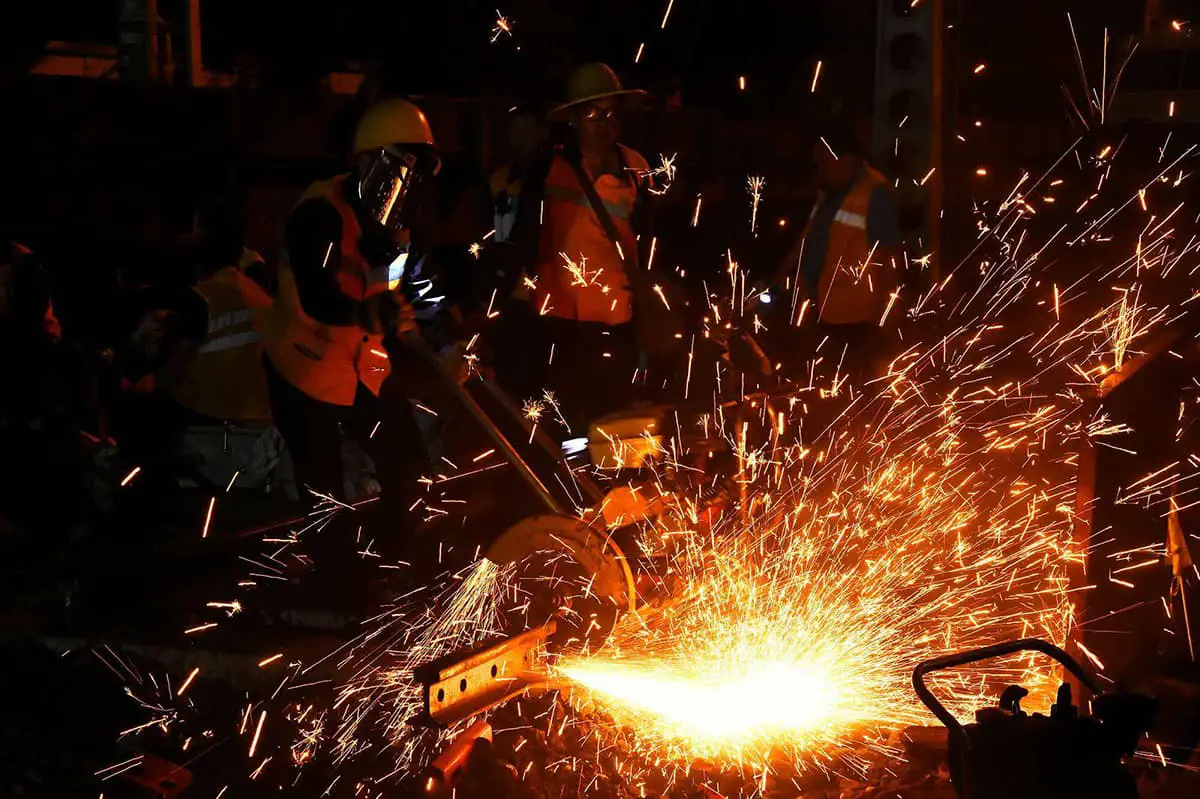
2. What is the name of each part of the spark?
Spark patterns, various parts and forms generally include:
1) Firebeam
When the test sample is ground on the grinding wheel, all sparks that are produced are collectively referred to as fire beams.
The fire beam can be divided into three main parts:
The fire beam that is nearest to the grinding wheel is called the root fire beam.
The middle part is called the middle fire beam.
The end part of the fire beam, which is farthest away from the grinding wheel, is called the tail fire beam. Refer to Fig. 12-1.
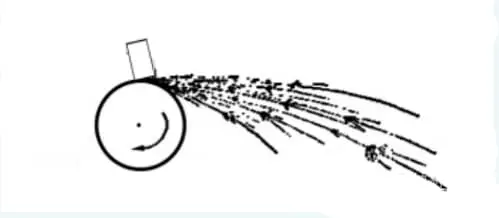
2) Streamline
When grinding steel, grinding particles fly out at high speeds, creating bright lines known as streamlines.
Based on the shape characteristics of streamlines, there are three common forms: straight streamlines, wavy streamlines, and intermittent streamlines, as shown in Figure 12-2.
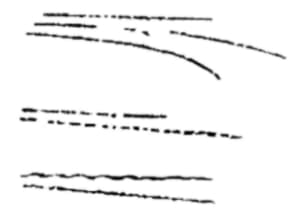
3) Firecracker
A burst pattern occurs in the middle of the streamline.
There are three common types of fireworks: dendritic fireworks, feathery fireworks, and bracts.
Branch-shaped fireworks resemble tree branches, with more or fewer branches, including two forks, three forks, and many forks.
There are different levels of splitting, including primary split, secondary split, and multiple split.
Feather-shaped explosions are a special form of rimmed steel explosion that resemble feathers. Bracts are special expansion forms that occur in the middle of the streamline and include bursting before and after the expansion part.
Please refer to Figure 12-3. If the bract flower appears at the end of the streamline, it is also referred to as the bract flower tail flower.

4) Node
The point where the streamline bursts halfway is called a node.
Some fireworks have bright and plump nodes, while some fireworks have no obvious nodes.
5) Awn line
When the spark bursts, the streamer is called the awn line.
Dendritic fireworks can be regarded as the collection form of most awn lines.
6) Pollen
Sparks in the form of dots between the exploding awn lines or near the streamline.
7) Tail flower
Cauliflower is an abnormal form of streamline tail.
There are three kinds of common tail flowers: fox tail flower, spear tip tail flower and magnolia tail flower. As shown in Fig. 12-4.


Fig. 12-4 Tail flower form
8) Color
The color and lightness of the whole flame beam or part of the spark.
3. What is the equipment and operation for spark identification?
The primary tool used for spark identification is a grinder.
Grinding machines can be either desktop or portable.
A bench grinder is suitable for inspecting steel samples and small-shaped parts.
A portable grinder can be used to identify batches of steel in workshops and warehouses.
The power of the motor used for a bench grinder is 0.5 KW, and the rotating speed is around 3000 RPM.
The motor for a portable grinder has a power of 0.2 KW and a speed of 2800 RPM.
Excessive power and speed can cause sparks to scatter, which is not conducive to identification.
If the power and speed are too low, it will be difficult to grind alloy tool steel and high-speed steel containing tungsten, and it may even fail to produce a flame beam.
The grinding wheel should have a grain size of 46# or 60# (preferably 60#) and medium hardness 200mm, and the thickness should be 20~25mm.
The grinding wheel for a portable grinding machine can have a diameter of 9020mm.
1) Be familiar with the performance of tools
It is advisable not to frequently change the tools such as the grinding machine and grinding wheel granularity.
Having knowledge and familiarity with the tools’ performance is an essential aspect of identifying sparks.
The spark form can vary due to changes in wheel speed and particle size of different grinders.
2) Maintain the sharpness and roundness of the grinding wheel friction surface
The sharpness and roundness of the grinding wheel’s friction surface must be regularly maintained to ensure a consistent projection force.
If the grinding wheel is not sharp, it can reduce the streamline, while if the roundness is not maintained, steel may jump while rubbing against it. Therefore, the roundness of the grinding wheel should not be too small.
3) Use standard blocks to correct the impact of the environment
Before starting work, it’s important to identify a standard sample to correct for the potential influence of the objective environment.
The brightness of the work environment can significantly affect the observation of sparks.
4) Choose a good workplace
The identification site should not be overly bright, but it does not need to be completely dark. It is important to maintain consistent brightness to ensure accurate identification.
Generally, it is not advisable to operate outdoors. However, if outdoor operation is necessary, a movable tarpaulin covered with black cloth should be used to avoid interference from strong light, such as that from rabbits.
5) Standard steel sample of self-made steel grade
A set of standard steel samples with known steel grades should be provided for comparison in learning and identification. The more comprehensive the steel samples, the better.
To determine the correct content of each element, the standard steel samples must undergo chemical analysis.
4. What is the significance of spark identification?
As a technical worker in the machinery manufacturing industry, you will encounter challenges with metal material selection and heat treatment.
Improper material selection or mixing different steel grades during part processing can cause parts to fail to meet processing and usage requirements, leading to economic losses or serious accidents.
To ensure correct steel usage, it is crucial to understand the variety and performance of the steel used. Different types of steel have unique numbers and marks, and identifying steel grade is an indispensable and crucial link in machinery manufacturing.
Steel identification methods can be divided into chemical and physical methods. Although chemical analysis is reliable, it is only applicable for steel sampling inspection, and it can be time-consuming and costly, making it unsuitable for on-site work.
Physical identification methods may not be as precise as chemical analysis, but accumulated experience makes them useful for preliminary analysis on-site. The spark identification and Taoist analysis methods are the most practical and straightforward among physical identification methods.
The spark identification method is widely used as it is fast, convenient, and does not damage steel.
Steel is a significant raw material in machinery manufacturing.
When a large quantity of steel products enters the factory, they may become mixed due to repeated transportation and storage turnovers.
In the production process, quality should be given priority before feeding steel.
Before heat-treating steel parts, it is necessary to recheck and confirm the steel grade.
Different steel grades require distinct heat treatment conditions and process specifications, so it is important not to mistake the heat treatment process.
When parts require scrapping, the steel grades of the materials used for the parts must be identified to ensure proper disposal.
5. What are the effects of alloy elements on spark changes?
Carbon is the main element of steel grade, and its activation form changes with the increase of carbon content.
6. What is the spark pattern of commonly used steel?
Spark patterns of common steels are as follows:

Fig. 12-6 30 Steel
The flame beam appears entirely yellow, featuring a thick streamline in the middle, with slightly thinner ones at the root and slightly larger fireworks at the tail. Additionally, there are long awn streamlines that hang slightly.
In the case of the secondary explosion, it has multiple branches with bright explosion nodes.

Fig. 12-7 40 Steel
The length of the fireworks beam has slightly increased. All of the fireworks are now secondary bursts, and the fuse line is long and thick. Moreover, there are now more fireworks in the entire beam, and some pollen is starting to appear. The tail of the firework beam is also larger, and the color is a bright yellow.

Fig. 12-8 45 Steel
The length of the fire beam is longer than that of 40 steel. The shape of the fireworks is larger, and the number of streamlines and fireworks has increased. The streamlines are thicker, and the awn line is longer. There is a proper amount of pollen between the streamlines, and they emit forcefully, resulting in a larger degree of bursting. The nodes are bright, and the number of fireworks at the tail is significantly more than that of 40 steel. Additionally, the color is bright yellow.

Fig. 12-9 50 Steel
The length of the flame beam is equivalent to that of a 45 steel beam.
The explosion pattern is significant, with an increased number of streamlines and explosions. The streamlines are thick, with long awn lines and pollen between them, making the explosion powerful. The nodes are bright, and the number of explosions at the tail is noticeably higher than that of a 45 steel beam. The color of the flame is bright yellow.

The entire flame is yellow, with a slightly thick and long streamline and a straight shape. The middle portion towards the pouring tail is slightly drooping.
A single explosion pattern with multiple branches, made of carbon structural steel with the same carbon content, is slightly more regular than the explosion pattern. The degree of explosion is large, and the nodes are brighter.
The presence of chromium at this stage demonstrates its role in lengthening and cracking.

The spark beam is bright yellow, and it has many streamlined lines. The secondary burst of the compound flower is large, neat, and regular with a significant number of fireworks. The awn line is long and thick, and the flower angle is clear and well-separated.
There is an adequate amount of pollen, and the burst degree is high with thick streamline, slightly drooping from the middle to the tail. The burst degree of the big branch chrysanthemum is even more intense.
Currently, the medium carbon low inscription still serves the purpose of promoting the explosion.

Fig. 12-12 20CrMo Steel
The flame beam of the material is shorter than that of 20Cr steel. The streamline is slightly thinner, and there are multiple bifurcations and a single explosion at one time.
When compared with 20CrMo, the explosion pattern has shrunk, the degree of explosion is weakened, the nodes are not very bright, and the color is yellow. Additionally, the tail of the streamline has gun tip tail flowers.
Molybdenum has the property of inhibition at this stage.
Although chromium is an explosive element, it coexists with molybdenum, and its properties become subordinate.

Fig. 12-13 40CrMo Steel
The flame color of 42CrMo steel is slightly darker than that of 40Cr steel, and its streamline is similar. It forms secondary explosion compound flowers with an appropriate amount of pollen, and the nodes appear bright. However, the explosion patterns are irregular and messy, and the degree of explosion is slightly weakened. At the tail, there is a gun tip tail flower, which is not seen in 20CrMo steel.
From this, it can be inferred that the carbon content has a certain impact on molybdenum.

Fig. 12-14 60Si2Mn Steel
The fire beam has a moderate length and a reduced streamline, and is slightly thick. Most of them burst twice, while some burst three times with a small flower type and an obvious node of silicon bud. These types have few and short awn lines, a slightly weaker burst degree, and no pollen. The spark color and explosion node are not very bright.

Fig. 12-15 GCr15 Steel
The fire beam has a moderate length and features many streamlined and triple burst patterns. The streamlines are slightly thin, and they are densely covered with branch-shaped fireworks.
The amount of fireworks is large, the patterns are small, and the awn line is thin and irregular. There is a significant amount of pollen between the awn lines, and the nodes are not very distinct. The color of the fireworks is orange.
The internal organization is troostite pearlite in the hot-rolling state. The fire beam is long and thick, and it features three bursts. The burst intensity is strong, the awn line is long, and there is a significant amount of pollen between the awn lines. The burst nodes are bright, and the tail pattern is long and located in the middle.

Fig. 12-16 Cr12MoV Steel
The fire beam is thin and extremely short, with a wavy and intermittent streamline that appears to be numerous and slender.
The fireworks are exceptionally powerful, producing sparks that burst into three different flowers with multiple branches and significant stars. The flowers contain numerous broken flowers and pollen, and are full of fire.
The end of the streamline has an obvious gun-shaped tail flower as a result of the molybdenum content. Additionally, the streamline at the tail is slightly thicker, giving the material a hard feel when rubbed.
Color: yellow to orange. Spark form is not different from Cr12.

Fig. 12-17 5CrMnMo Steel
The fire beam is the thickest and longest, the streamline is medium in thickness, and the burst is the second strongest. All of them burst three times, sometimes with a few flowers, and there are molybdenum gun tip tail flowers.
The flower shape is a multi-branched three or four-segment star-shaped flower with a lancet tail flower. The awn line is dense, the distribution area of the flowers accounts for 55-60% of the whole fire bundle, the flower shape is large, and the flower angle is wide.
In terms of color, the fire beam is bright yellow, and the nodes are yellow to white. The resistance is less strong when grinding.

Fig. 12-18 3Cr2W8V Steel
The beam of fire is relatively long and the streamline is very thin, wavy, and intermittent. The burst is weak, with only a small amount of flowers in a bald fox-tail shape and size.
Body color: fuchsia.
Bald and solitary, light cherry red.
It feels very resistant when grinding.

Fig. 12-19 W6Mo5Cr4V2 Steel
The flame beam appears as a short, bright orange-yellow color, with a dark red hue at the base.
There are a few irregular streamlines along with some wave-like patterns.
The streamlines are not very thick and have a medium length.
The tail streamline is thicker and resembles a willow leaf with tail flowers, and the tip has a slight baldness.
The fireworks are few in number but have a large shape.
There are only a few awn lines, which are also bald.
The tail streamline droops downwards.
7. What are the precautions for spark identification?
Judging the steel grade of the tested sample based on the observed spark pattern can be challenging.
This is because the spark patterns may exhibit subtle differences that are difficult to accurately describe and express. A skilled practitioner with ample experience and expertise is required to accurately discriminate between these subtle differences in spark patterns.
1) Identify and check the required steel grades of known parts.
Currently, it is necessary to use spark identification only to confirm whether a material belongs to the intended steel grade.
When identifying a batch of parts, the first part should be carefully observed and analyzed. Once it has been confirmed that steel No. 1 is being used correctly, the part should be lightly ground to observe the basic characteristics of sparks when it is least worn.
This feature should be kept in mind, and the remaining parts can be ground with light pressure. This approach not only aids in identification but also minimizes wear and tear on the parts, thereby avoiding any negative impact on their appearance or functionality.
2) Two steel grades are known to be mixed for identification.
At this time, it is important to focus on the fundamental differences between the two steel grades in their spark patterns. Once you have a clear understanding of their respective characteristics and key distinctions, it becomes much easier to differentiate between them.
3) Steel grade identification shall be conducted for parts with unknown steel grade.
If the discriminator understands the basic use of steel and is familiar with the common sense of the materials that should be used to make various parts, it can be of great help in identifying sparks.
One factor to consider is whether dendritic explosion occurs when grinding the sparks. If there is dendritic explosion, it can be further inferred from the following situations:
① If dendritic explosion occurs normally, and there are no sparks in other special forms, it is mostly carbon steel (killed and semi-killed steel).
At this point, if the pattern is a split burst and the burst pot is relatively sparse, it indicates that the carbon content is low, and it belongs to the low carbon range of carbon steel.
If the pattern is a secondary, tertiary, or a small amount of multi-split dendritic explosion, the amount of explosion is medium, and the distance between the explosions is clear, indicating that the carbon content of the sample is about 0.4% C, and it belongs to the carbon steel in the medium carbon range.
If the explosion is a multi-forked tree-shaped explosion, the amount of explosion is large, and the distance between the explosions is small, indicating that the carbon content is high and it belongs to high carbon steel. When the explosion is crowded, it confirms that the carbon content is high.
② If the explosion exhibits a dendritic pattern and has a feathery appearance, it indicates that the steel is rimmed with very low silicon content. The carbon content can be estimated roughly based on the explosion amount, which can help infer the steel grade.
③ To roughly identify the type of steel:
- Obvious dendritic explosions are present at the end of the flame beam with large branches, disordered awn lines, and strong explosion strength. Most of them belong to the manganese steel group of alloy structural steel.
- Neat and regular fireworks, bright colors, straight and thick streamline explosions, mostly belong to chromium-containing structural steel.
- Obvious straight tail flowers of the gun tip appear at the end of the flame beam, with dendritic explosions restrained to a certain extent. Most of them belong to the chromium-molybdenum steel, chromium-manganese steel, and other steel groups of structural steel.
- Particularly bright nodes before the explosion or explosions with silicon bracts mostly belong to the silicon-manganese and chromium-silicon steel groups of structural steel or spring steel.
- If both spear tip tail flowers and silicon-containing bud flowers appear, and the dendritic explosion shrinks significantly, it mostly belongs to the silicon-manganese-aluminum and silicon-manganese-aluminum-vanadium structural steel.
- Regular dendritic explosions occur, and nickel-containing bracts appear before the explosion. The decarburized layer on the steel surface is apparent, and most of them belong to the chromium-nickel alloy structural steel.
- Fox tail flowers are present, and the tree-like explosion is mainly attached around the fox tail. The root streamline is bright, not dark red, indicating that it belongs to Kesimiduo’s tungsten alloy structural steel.
